Copyright 2009 Cambridge Leadership Associates
All rights reserved
No part of this publication may be reproduced, stored in or introduced into a retrieval system, or transmitted, in any form, or by any means (electronic, mechanical, photocopying, recording, or otherwise), without the prior permission of the publisher. Requests for permission should be directed to , or mailed to Permissions, Harvard Business School Publishing, 60 Harvard Way, Boston, Massachusetts 02163.
First eBook Edition: June 2009
ISBN 978-1-4221-0576-4
To our parents, Betsy and Milton Heifetz, Sheri Saltzberg
and Mark Grashow, and Ruth and the late Harold Linsky,
whose fingerprints, teachings, and values permeate this book
and everything we do.
Contents
On a beautiful spring evening in 2006, the three of us (two Boston Red Sox fans and a New York Mets fan) were watching a Red Sox baseball game on television at Rons house. The Red Sox were well ahead. The conversation began to drift to reflecting on the insights we had gleaned from the clients and students with whom we had worked over the past quarter century as they tried to apply the frameworks we have offered to their own challenges of leadership on important and tough issues. This book grew out of our conversation that evening.
Our previously published work had been focused on developing the conceptual framework and practical basis for adaptive leadership, but as we talked together that night, we realized that we knew a lot more about the operational nitty-gritty, how to actually do adaptive leadership, than we had written before. The efforts of people with whom we had worked across all three sectors and all over the globe had created a real-time virtual learning laboratory for translating leadership into practical tools and techniques for leading adaptive change. By the end of that evening, we understood that together we had enough of a track record of real experience that we had the opportunity, perhaps even the responsibility, to share these insights and emerging best practices with a wider audience. The tools and tactics for leading adaptive change should be treated, we believe, in the same spirit as open source technology, made broadly available, so that people who lead adaptive change can learn from each other and improve their skills, and all of us improve our insights into practice.
During that evening, we talked about several people with whom we had recently worked. Gail went well beyond her job description to help people in her firm deal with persistently troubling external and internal pressures. Drew deliberately gave up a role he enjoyed enormously and performed with unique competence, defining his professional identity, and stepped into discomfort and incompetence by taking on new responsibilities to enable his firm to reach higher aspirations. Ed walked away from a secure career he loved with its promising personal trajectory to build an institution committed to helping the people of his state tackle the big questions, knowing he was going to have to raise the heat carefully in the system to have an impact. Clive and Brian took significant risks within each of their governments to develop the leadership capacity of senior officials to operate more creatively, courageously, and wisely in mobilizing collaboration and innovation across sectors in their countries. And Debbie believed so deeply in the need for leadership in her religious community that she put her own job on the line to change the way her organization thought about the qualities needed in its senior people.
Each of them faced what we call an adaptive challenge for themselves and for the communities in which they took action. In order to exercise leadership on that challenge, they had to go beyond what people expected of them, risk testing some relationships, and move themselves and their organizations into unfamiliar territory. They had to be coolly realistic and skilled at diagnosing their own resources and constraints, and make some necessary adaptations in their own preferred behaviors. And they needed to do the same coolheaded diagnosis for the situation: understand the underlying value conflicts embedded in the strategy of the organization or community, what and whose interests benefited from the status quo, and the political dynamics that both kept their organizations in their current equilibrium and offered some potential for catalyzing change. They each learned in the midst of action, made some mistakes and midcourse corrections, and stayed the course.
Their journeys are close-to-home sagas of leading adaptive change, with all the dangers, ambiguity, setbacks, and improvisations that leadership journeys involve. As of this writing, none of their journeys are over. The work of leadership continues.
In this book, we have tried to capture their experiences and those of many others (usually appropriately disguised) with whom we have worked in the classroom or the field, at the tactical level, teasing out lessons and then creating straightforward, practical, accessible resources and tools in the hope that doing so will be useful to you as you take on the issues you consider most important. Everything in this book comes from the field and has been tested there by our clients and students. They have been out on the edge, trying techniques and honing their skills, and we are no more than the vehicles for transmitting their insights to you.
In a very real sense, this field book is a tribute them, our clients and students, who have taught us more than they can imagine.
This book could not have been written without the generosity of our clients, program participants, students, and friends in sharing their challenges, stories, and learning with us over the past quarter century, particularly during the years after the publication of Leadership Without Easy Answers and Leadership on the Line and the formation of Cambridge Leadership Associates (CLA). This book is theirs as much as it is ours.
As we have noted in the text, this book has many intellectual and practitioner progenitors. These ideas and tools have lineage that goes back centuries, as well as a distinctly twentieth-century context. Starting more than thirty years ago, Riley Sinder, collaborating with Ron Heifetz, created much of the intellectual bedrock on which adaptive leadership rests. Sousan Abadian deepened this work and enriched its articulation in countless ways for over two decades as colleague, practitioner, and Rons former wife.
We thank many of our current colleagues at CLA, including Jeff Lawrence, Karen Lehman, Eric Martin, JoAnn Martin, Hugh ODo-herty, Lee Teitel, and Kristin von Donop, for their wisdom and input, for their significant additions to the ideas and tools in this book, for their willingness to road test so much of this material, and for their forbearance while we took much more time away from CLA core activities than we had planned in order to see this field book through to publication. And we recognize the contributions of Liz Nill, our founding managing director, who believed in this project from the outset and without whom CLA would likely not exist.
Ron and Marty appreciate the colleagueship of our friends at the Harvard Kennedy School, the succession of deans under whom we have worked, and particularly our faculty colleagues in the management, leadership, and politics areas of the school, and the team at Executive Education under Pete Zimmerman and now Chris Letts, all of whom have supported our work in their own ways. Alexander is grateful to the friends, family, and colleagues from across the globe who have shaped his experience of the world and shared many long, animated meals. Gil Skillman, Peggy Dulany, the Blue Unit, Imraan Jamal, and Rachel Grashow, in particular, expanded Alexanders ideas and experience and encouraged his dreams.


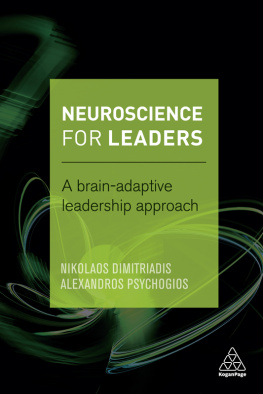
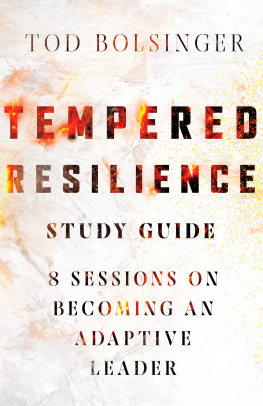
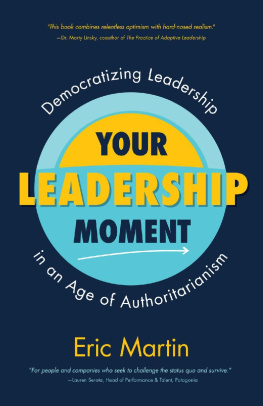
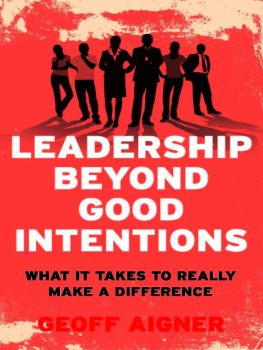


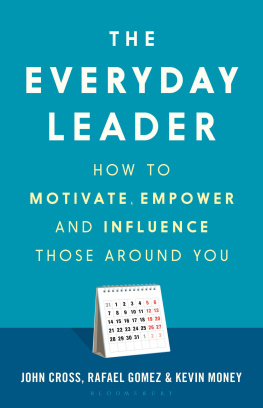
![Sarah Lewis [Sarah Lewis] - Positive Psychology and Change](/uploads/posts/book/124055/thumbs/sarah-lewis-sarah-lewis-positive-psychology-and.jpg)



